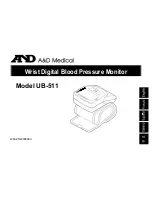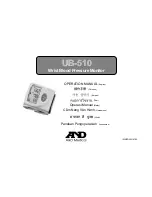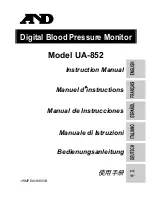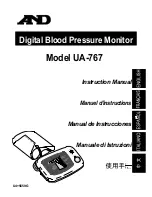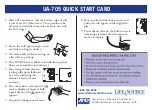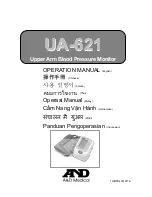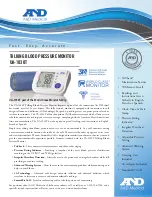
Appendix D
321
Category 5
Winds greater than 155 mph (135 kt or 249 km/hr). Storm surge
generally greater than 18 ft above normal. Complete roof fail-
ure on many residences and industrial buildings. Some com-
plete building failures with small utility buildings blown over or
away. All shrubs, trees, and signs blown down. Complete
destruction of mobile homes. Severe and extensive window and
door damage. Low-lying escape routes are cut by rising water 3-
5 hours before arrival of the centre of the hurricane. Major dam-
age to lower floors of all structures located less than 15 ft above
sea level and within 500 yards of the shoreline. Massive evacu-
ation of residential areas on low ground within 5-10 miles (8-16
km) of the shoreline may be required.
Isobar
A line on a weather map linking areas with equal air pressure.
Lightning
Discharge of static electricity in the atmosphere, usually between
the ground and a storm cloud.
Low
Also called a 'depression' - this region of low pressure can mean
wet weather - it is the opposite of 'high' pressure or 'anticyclone'.
Low Pressure
A mass of air that presses down only weakly on the surface of the
Earth because it is being warmed and it therefore less dense.
Millibar
A unit used to measure atmospheric pressure.
Occluded Front
An area where warm air is pushed upwards as a cold front over-
takes a warm front and pushes underneath it.
Precipitation
Moisture that is released from the atmosphere as rain, drizzle, hail,
sleet or snow, as well as dew and fog.
Pressure Centre
A region of high or low pressure.
Squall line
A non-frontal band, or line, of thunderstorms.
Super typhoon
A typhoon that reaches maximum sustained 1-minute surface
winds of at least 65 m/s (130 kt, 150 mph). This is the equivalent of
a strong category 4 or 5 hurricane in the Atlantic basin or a cate-
gory 5 severe tropical cyclone in the Australian basin.
Tornado
A funnel-shaped whirlwind which extends to the ground from
storm clouds.
Term
Definition
81244_4.book Page 321 Thursday, January 31, 2008 1:53 PM































